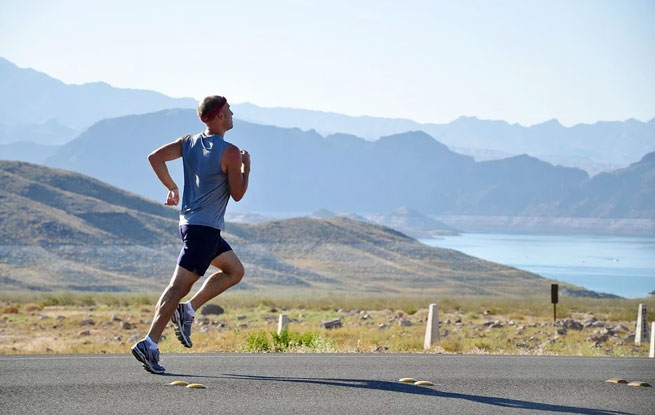Nov 19, 2018Reinforcing fundamental movements in athletes
Fundamental movement skills — running, backpedaling, shuffling, decelerating, and changing directions — seem like they should come naturally. In fact, many athletes lack proper technique in many of these areas, and even those that are naturally gifted in one area may lack in another.
According to Joe Eisenmann, PhD, Head of Sport Science at Volt Athletics, it’s important take the time to teach and coach the fundamental locomotive movements, as these skills are essential to almost any athlete’s success.

Single-leg stance
Since most actions in sports require a unilateral pattern (being on one leg at a time), Eisenmann’s first step is to teach the single-leg stance, or single leg balance. Athletes should be able to stand on one leg with knees and hips slightly flexed, tall chest, butt out, on balls of feet, toes forward, and feet shoulder-width apart.
Some athletes might lock their knee or straighten their leg instead of having it slightly bent, but this is a common mistake that should be corrected. Athletes might also have trouble maintaining postural control of their upper body. Eisenmann suggests having the athlete hold onto the wall or some other fixed surface/item until they gain confidence and motor control in this single-leg stance.
Hopping and skipping
Once an athlete can consistently balance on one leg, the next step is to introduce the hop, which will help develop dynamic balance. Start by having athletes hop in place with small jumps, and then progress to short hops in a certain direction. Have them alternate between legs while focusing on maintaining body control. Gradually increase the number and length of the hops.
» ALSO SEE: 4 simple exercises that teach athletes to bend
The landing phase of the hop is an important point of emphasis. Athletes should land softly, on the ball of the foot, absorbing the energy of the hop with a flexed or bent knee. Perfecting the landing will also help athletes with the springing action needed for sprinting.
Skipping simply adds a step between hops. While athletes skip, they should think about the movement and the landing to make sure they are using the right form. Practicing skipping will naturally segue into proper running technique.
Forward, backward, sideways
Everybody can run, but the goal is to make sure you’re athletes are doing so efficiently. Instead of focusing solely on speed, there are a couple running techniques that Eisenmann’s suggests coaches focus on:
- Stay tall (with a slight forward lean)
- Good arm action (90 degrees, moving from hip pocket to chin)
- Land on ball of foot
- Drive the knee
Athletes also have to backpedal. Here are Eisenmann’s coaching instructions:
- Push the ground forward
- Reach the heel back
- Keep the nose over the toes
Lastly, athletes need to shuffle from side to side. This is Eisenmann’s teaching progression for shuffling:
- Step to the side (right or left) and slide or pull the opposite foot toward the lead foot. Continue this sequence slowly for about 5 reps.
- At a faster pace (but still about 50% max effort), complete the step-slide ending in the athletic position.
- At the same pace as above, complete two sequences in a row. Shuffle-shuffle-stop. The athlete should stop in the athletic position.
- At the same pace as above, complete three sequences in a row. Shuffle-shuffle-shuffle-stop. The athlete should stop in the athletic position.
- At a faster pace (75% effort), have the athlete shuffle continuously for 10 yards.
Deceleration
The lunge is a great way to start teaching deceleration. Forward, backward, and side lunges all allow the athlete to practice decelerating their body in each direction, and ends with their front leg in the proper position.
When decelerating, athletes should shorten their stride a few steps before stopping, using a short, choppy, pitter-patter step pattern. They should also have a slight backward body lean, while the arms continue to oppose the movements of the lower body. As the athlete slows down, the front leg should be in a lunge position, or they can bring both legs into a bent athletic position.



